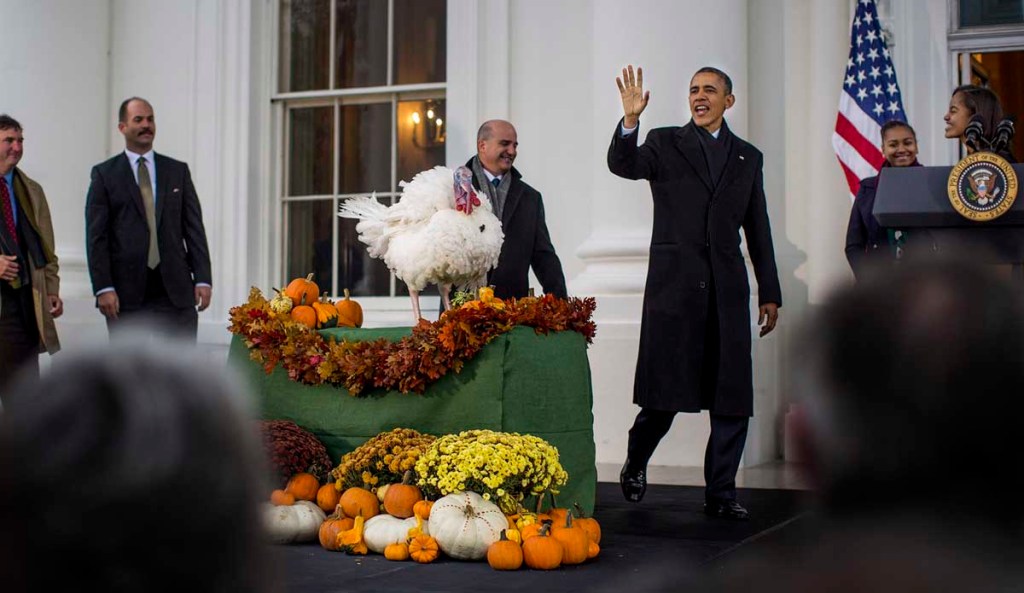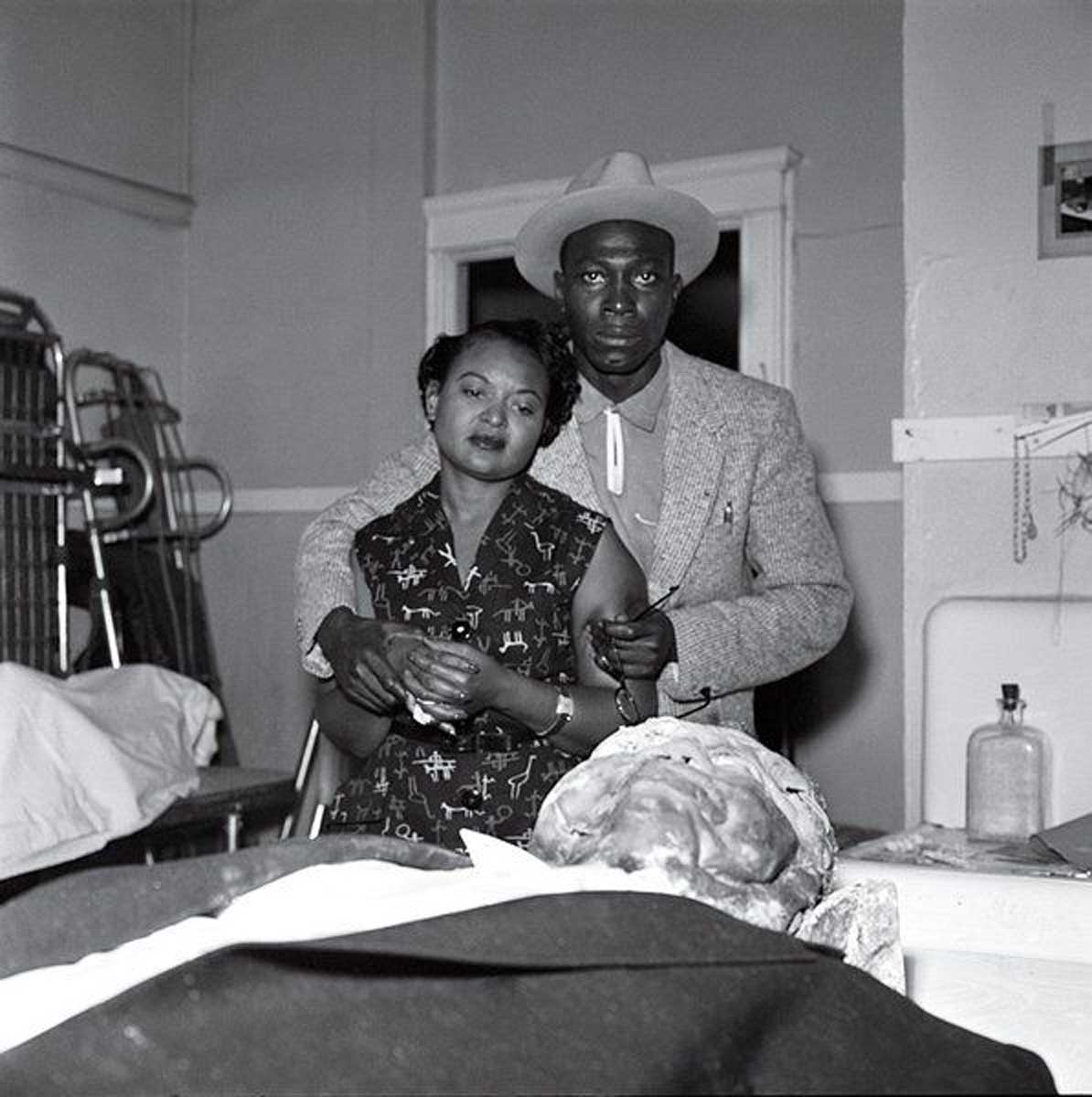Why does the president pardon a turkey (or two) every Thanksgiving?
Published 8:45 am Friday, November 21, 2014

- President Barack Obama, accompanied by his daughters, Sasha and Malia, right, pardons Popcorn the turkey during the annual 2013 National Thanksgiving Turkey Pardoning Ceremony at the White House on Nov. 27, 2013.
WASHINGTON – Every year for a quarter-century now, the president of the United States has pardoned a turkey.
Consider this for a moment.
Trending
Typically on the day before Thanksgiving, the man who makes decisions about wars, virus outbreaks, terrorism cells and other dire matters of state chooses to pardon a single turkey (plus an alternate, which presumably takes the place of the officially pardoned should he or she not be able to fulfill the duties). The birds for this year’s ceremony are already bulking up for their moment in the Rose Garden with President Barack Obama.
The two toms – their names still under consideration as of press time – were hatched in July and raised at Cooper Farms in Ohio, a family-owned operation that processes about 4.6 million turkeys annually. The feathered duo, one could assume, are too young to have committed crimes requiring a pardon – such as, say, terrorizing toddlers at a 4-H fair. In fact, at only a few months old, they are roughly the same age as the 46 million other turkeys that will not be spared by the president (or anyone else) this year.
The pardoned pair will not exactly earn their unconditional freedom, either: After the ceremony, the turkeys will go straight to Morven Park in Leesburg, Va., to live as tourist attractions, following almost the same path as last year’s poultry stars, Popcorn and Caramel. They’ll be there as long as the broad-breasted whites live, which typically isn’t long for a commercial breed raised to be abnormally large. Such bulk can be hell on a turkey’s legs and internal organs.
“Popcorn passed away, unfortunately, in July on one of those really hot days,” said a spokeswoman for Morven Park. “He just didn’t make it through the heat.” Caramel is doing great, thank you.
This White House ceremony clearly is not for the benefit of the creatures receiving the pardon. So, what is the point of the ceremony, and why have we paid attention to it every year since it began – not with Abraham Lincoln nor with Harry S. Truman, but with George H.W. Bush in 1989? It’s a question few seem to have considered, as if the point were either self-evident or too silly to ponder in the first place.
The activist-minded, of course, pounce on the question as a way to underscore the schism between this intellectually convoluted ritual and the reality of most farmed turkeys raised for the Thanksgiving table.
Trending
The “pardon speaks to the conflict between our human desire to act with kindness and the violence associated with a holiday tradition centered on the body of a dead bird,” emails Gene Baur, co-founder and president of Farm Sanctuary. It’s worth noting that the nonprofit organization promotes a meat-free diet.
“It is a way to validate our humanity,” Baur adds, “while also enabling the brutal slaughter of tens of millions of innocent animals.”
Bev Eggleston, president and founder of EcoFriendly Foods, latches on to the term “pardoned.” He points out that while the birds bound for the White House are among a small flock raised in Ohio, the millions of turkeys bound for our dinner tables are isolated on large industrial farms, where the creatures are basically incarcerated and treated as production units, not animals of any sentience.
“I find it really interesting that we use the semantics of imprisoning,” Eggleston says. “What really needs a pardon is our social disgrace, that we accept the unacceptable.”
Michael Pollan, a writer known for analyzing the food industry from multiple perspectives, views the turkey ceremony through an almost religious prism, as if it toys with the Old Testament ritual of animal sacrifices, designed to atone for our sins.
“It’s sort of an animal sacrifice in reverse – instead of killing the one to stand symbolically for the many, we free the one and kill the many,” Pollan offers in an email.
She doesn’t come right out and drop the word “sin,” but Marion Nestle, author and professor of nutrition, food studies and public health at New York University, figures the White House is applying balm to ease our troubled conscience.
“I’m guessing that a lot of people feel vaguely guilty eating meat from animals and birds raised for food, and being responsible for their death,” Nestle writes via email. “The turkey pardon symbolically lets them off the hook. It lets everyone feel good about some meaning of Thanksgiving beyond an excuse for gluttony.”
Baur at Farm Sanctuary finds the practice of naming the turkeys curious, an act designed to draw Americans closer to animals that will eventually land on our dinner plates.
“Farmers often deliberately don’t name [or get close to] their animals because they don’t want to get emotionally attached to them,” Baur notes. “Naming these individuals can be a way to personify the birds, but within the context of a national holiday that celebrates killing these animals by the tens of millions, it’s painfully ironic.”
“Still,” Baur adds, “a couple of saved lives is better than no saved lives.”
He then puts in a plug for an alternative to the pardon: Farm Sanctuary’s Adopt a Turkey Project, which helps support the care of rescued animals, including 65 turkeys at three shelters. “Our turkeys live longer lives than most industrial breeds,” e-boasts Susie Coston, national shelter director for the nonprofit group. Some live to be 10 years old, she adds.
(Other animal protection groups, such as the People for the Ethical Treatment of Animals and the Humane Society of the United States, take a different tack and suggest Americans adopt vegetarian and vegan menus for the holiday, support humanely raised foods or even rent the animated film “Free Birds” to promote turkey compassion.)
Turkey producers, as you might guess, don’t brood as darkly over the president’s poultry pardon as do the activists. Keith Williams, vice president of communications and marketing for the National Turkey Federation, plays up the group’s role in the ritual. Every year since Truman was in office, the federation’s chairman has presented the president with a national Thanksgiving turkey. Actually, that should be turkeys, plural, since the group usually gives the president a pair.
“As this tradition observes the opening of a season of thanks,” Williams notes in a statement, “we come to reflect on the president’s words of an America mindful and thankful of its history, purpose and traditions.”
This year’s federation chairman is Gary Cooper, and he’s no actor. He’s the chief operating officer for Cooper Farms, a 76-year-old operation that’s raising the turkeys for the White House. At 59, Cooper has spent his entire life on farms, amid these squawking creatures of questionable temperament. He can talk turkey.
As a major producer of turkeys – a bird native to North America and symbolically aligned with our country’s colonial roots – Cooper and his family have played an integral role in the Thanksgiving holiday, bringing Americans together over the table for decades. To Cooper, the turkey pardon is a moment of professional pride. It’s the fulfillment of his American dream: His farm will forever be a part of presidential and Thanksgiving lore, no matter how small.
“I’m able to represent . . . that these dreams really do come true,” Cooper says in an interview. “It’s great to go to the White House and give a couple of turkeys to the president.”
So, how can the average American reconcile the perspectives of the activist and the turkey farmer over this ceremony? For help on the matter, I turned to Gregory Kaebnick, a scholar at the Hastings Center, a bioethics research institute in Garrison, N.Y. Kaebnick devotes significant brain power to pondering the moral issues around our relationship with nature. He finds value in the turkey pardon.
“There are a few small things to like about it,” Kaebnick emails. “It’s a tiny signal of restraint and moderation on a day that, at least at my house, is about getting as much as possible into the oven. It’s live and let live, even if it’s just turkeys.”
When I mention that Kaebnick is one of the few people I’ve interviewed who are outside the turkey industry and still support the ritual, he types back another response:
“I suppose it could be adapted to accomplish something,” he offers. “Perhaps Michelle Obama could use it to talk about industrial animal farming and overall meat consumption. But I doubt it does any great harm in its current form, and I end up thinking we should save our moral outrage for other things.”





